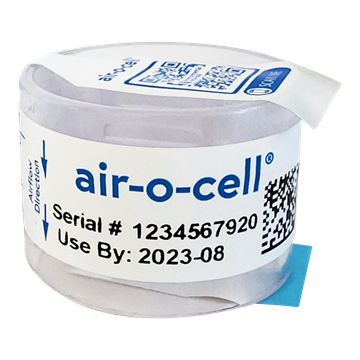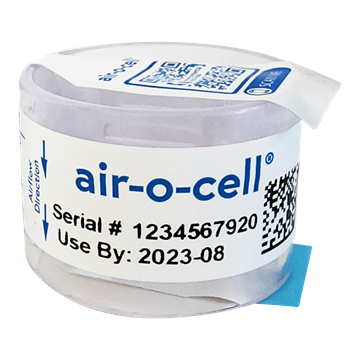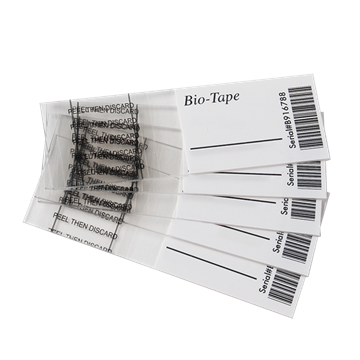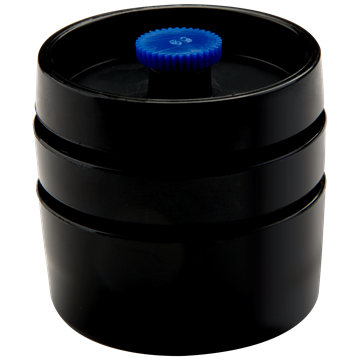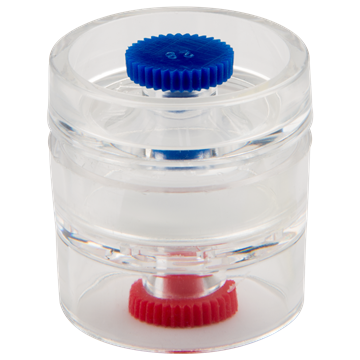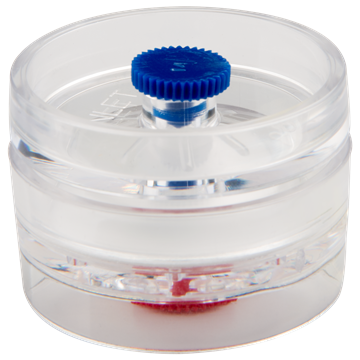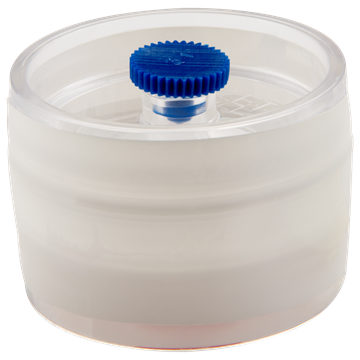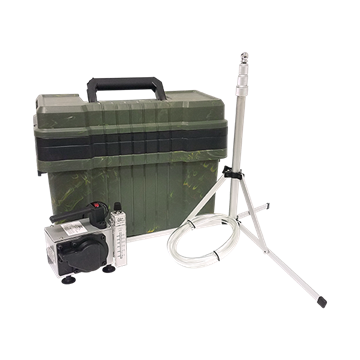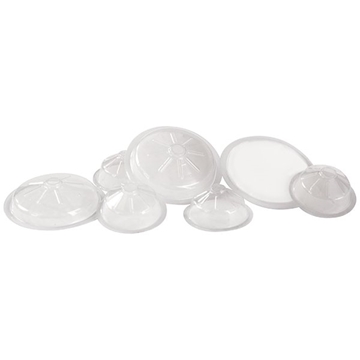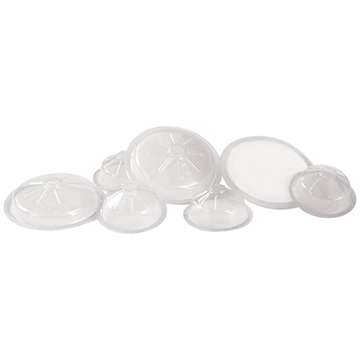
Table of Contents
- What Are Air Sampling Wall Losses?
- How Sampling Wall Loss Occurs in Cassettes
- Average Industry Sample Loss for Each Contaminant Type
- The Importance of Accounting for Wall Loss
- How to Account for Sampling Wall Losses
- How to Prevent Sampling Wall Loss
In the U.S., 37-mm cassettes are commonly used to collect aerosol samples. When collecting an aerosol sample, it's often the case that some of the material gathers on the wall of the cassette, rather than making its way to the filter. The National Institute for Occupational Safety and Health (NIOSH) expects all particles that make their way into the sampler to be included in the measurement and analysis of the sample. That includes particles that find their way to the filter and particles that end up on the wall of the sampler.
Wall loss can disrupt the accuracy of the results from a sample, as it's possible that a considerable amount of the sample will end up on the sides of the cassette, rather than in the filter itself. Fortunately, there are ways to account for air sampling cassette wall losses.
What Are Air Sampling Wall Losses?

During air sampling, a specific volume of air is collected, and the amount of a particular contaminant is measured in that volume of air. The goal of air sampling is to evaluate how much of a particular contaminant is in an environment and to assess how safe the atmosphere is for workers and others who will be exposed to the air.
Although there are multiple methods of collecting an air sample, one of the most commonly used processes involves pumping air through a filter at a specified rate. The flow rate lets you compare the volume of air sampled to the volume of any collected particles or contaminants.
In a perfect world, all of the particles being evaluated would travel to the filter of the air sampler, where they can be collected and analyzed. What often occurs is something known as wall loss.
Wall loss refers to the collection of particles on the inner surface of an air sampler cassette, rather than in the filter itself. One of the challenges of wall loss is that all of the particles collected during air sampling must be accounted for when the sample is analyzed and measured. If the particles that accumulate on the walls of the cassette aren't included in the sample itself, then the results won't give you an accurate idea of the level of contamination or the volume of particles in the air.
How Sampling Wall Loss Occurs in Cassettes
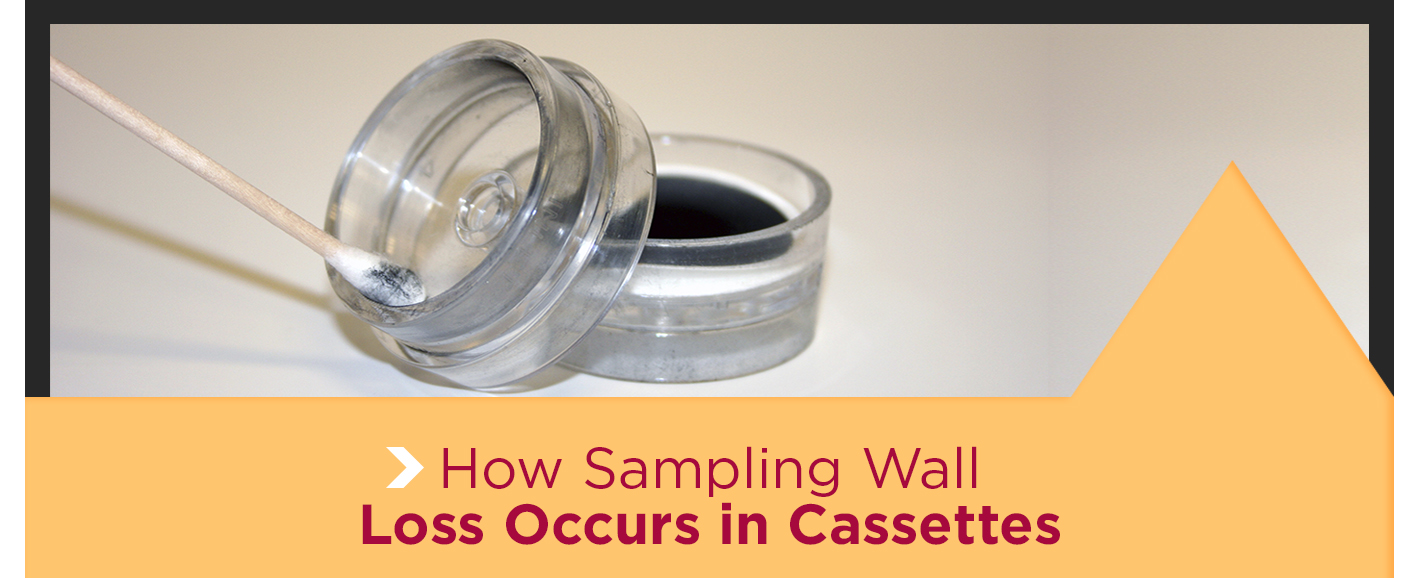
Wall loss can occur in cassettes as several points during the air sampling process. It can happen when the sample is being taken, after collection, when the sample is being transported from the collection site to the laboratory and when the sampler is handled by the technician who is analyzing it.
Among the causes of wall loss are:
- Gravity
- Particles "bouncing" from the filter to the inner walls of the cassettes
- Particles settling on the wall rather than in the filter
- Electrostatic attraction
- Motions on the interior of the sampler
- Movement of the sampler during shipping
- Movement of the filter and sampler when a technician takes the cassette apart for testing
Wall loss might not seem like a significant issue, but multiple studies have shown that the volume of particles that can end up on the walls of a cassette can often be considerably higher than the number of particles that makes it into the filter. The studies have also demonstrated that there is considerable variation in the amount of dust and particles that collect on the walls of a cassette — anywhere from two percent to 100 percent.
Although gravity, movement and electrostatic can all interfere with the distribution of particles in an air sampler, those same forces are not likely to interfere when a person is breathing in the air that needs to be sampled. Since it is expected that a human would breathe in all the particles found in a given area, all of the particles collected during a sampling session need to be evaluated, whether they make it to the filter or collect on the walls of the cassette.
Average Industry Sample Loss for Each Contaminant Type
The average amount of sample loss varies considerably based on the type of contaminant and the location or work environment.
The maximum amount of wall deposits of lead from samples taken at copper smelting facilities was 55 percent. The median wall loss from those facilities was 21 percent.
Meanwhile, the maximum wall loss of a lead sample from a lead ore mill was 35 percent, and the median sample loss was 19 percent. A solder manufacturer had maximum wall deposits of 74 percent while the median rate was 29 percent. A facility that produces batteries had maximum wall deposits of 66 percent and median wall deposits of 28 percent.
Lead isn't the only particulate that air sampling tests for. Another potentially dangerous particulate is hexavalent chromium (Cr(VI)). Cr(VI) is often used in plastics, inks, paints, and dyes as a pigment. Workers who perform "hot" tasks such as welding can be exposed to Cr(Vi) when they work with metals that contain chromium. More than half a million workers in the US can be exposed to Cr(VI) while going about their daily tasks.
Average wall loss of Cr(VI) depends on the activity. Welding activities have the highest maximum wall deposit rate, at 55 percent. The median rate for welding environments is five percent. The variation between maximum and median wall loss deposits is much smaller for paint spraying environments, where the maximum is 12 percent and the median is seven percent, and for electroplating environments, where the maximum is 17 percent and the median is 12 percent.
Sample loss rates for other contaminants include:
- Zinc (zinc foundry): Max wall deposits: 62 percent, Median wall deposits: 53 percent
- Zinc (zinc plating): Max wall deposits: 91 percent, Median wall deposits: 27 percent
- Iron dust (cast iron foundry): Max wall deposits: 46 percent, Median wall deposits: 22 percent
- Iron dust (grey iron foundry): Max wall deposits: 77 percent, Median wall deposits: 24 percent
- Copper dust (Cuproberyllium foundry): Max wall deposits: 40 percent, Median wall deposits: 31 percent
- Beryllium dust (Cuproberyllium foundry): Max wall deposits: 39 percent, Median wall deposits: 12 percent
The Importance of Accounting for Wall Loss
When collecting an air sample, accuracy is critical. If you don't use the right flow rate or the same flow rate each time, it can be difficult, if not impossible, to get an accurate idea of how much of a particular contaminant is in an area and what a worker's risk of exposure to that contaminant is. Without a precise sample, there is no telling whether or not the air contains more than the recommended amount of particulates and whether or not workers are exceeding the recommended exposure limits during their shifts.
If you collect a sample from the air to test the amount of lead dust, and 40 percent of the lead dust taken from a given area ends up on the wall of the cassette, and there's no accounting for the cassette wall deposit, you aren't getting an accurate reading. Without an awareness of how much of a specific particulate or another contaminant — such as vapor — is in the air, workers may be exposed to dangerous levels of dust and other harmful substances.
Aside from protecting employees, there are other reasons to properly account for sampling loss. At this point, the Occupational Safety and Health Administration (OSHA), NIOSH, ASTM International and the International Organization for Standardization (ISO) all have either voluntary or mandatory standards that stipulate that wall deposits need to be accounted for during the sampling and analysis of air.
How to Account for Sampling Wall Losses

There are several ways to account for wall deposits and to include the volume of those deposits in your analysis when air sampling. The methods vary and include practicing certain techniques when collecting the sample or using a specific type of cassette. Techniques that can potentially account for wall deposits include:
- Wiping the interior of the cassette
- Rinsing the cassette
- Removing the sample directly inside of the cassette
- Using a "self-contained" filter in the cassette
Although some techniques will add some or all of the wall deposits to the analyzed sample, they are far from "perfect" solutions to the problem. Several studies have reported that rinsing the walls of a cassette was an "inadequate" method of removing the wall deposits. Wiping the walls of the cassette is somewhat preferable, but still runs the risk of not fully collecting all of the deposits from the wall and might require multiple passes to collect enough of the deposit.
One study focused on the difference between wiping and rinsing the walls of a cassette to recover lead deposits. The researchers collected 54 samples at a lead processing and smelting plant. The samples were located at three separate locations at the plant and had an average sampling time of 460 minutes. The experiment lasted three days. Half of the samples were first rinsed, then wiped after collection and the other half were only wiped.
For both groups, an average of 74 percent of the lead was found in the filter of the cassettes. For the wipe-only group, an average of 21 percent of the lead was collected in the first wipe. For the rinse-then-wipe group, an average of 23 percent of the lead was collected by the rinse followed by the wipe.
How to Prevent Sampling Wall Loss
In some cases, it might be possible to prevent wall losses in sampling cassettes. One way to prevent sample loss is to design a cassette that eliminates the likelihood of deposits collecting on the inner wall of the sampler.
There are several ways to design a cassette that minimizes or eliminates wall loss. One option is to create a cassette that is conductive, which means that the amount of static electricity will be reduced. Conductive samplers tend to have considerably lower rates of loss compared to non-conductive samplers or samplers with low conductivity.
The shape of the cassette can also help to prevent sampling wall loss. For example, a cassette with smooth surfaces and a round shape is less likely to produce eddies and less likely to have loss compared to a sampler with corners. The size of the filter area can also significantly reduce or even prevent wall loss. A smaller overall filtration area means that there is a lower chance of particles ending up on the wall next to the filter, rather than on the filter itself.
All in all, using a cassette made from a conductive material, with a round, smooth shape and a small filtration area, helped to reduce wall losses significantly. A cassette with those three features had wall loss of around five percent, compared to cassettes without those features, which had wall losses as high as 30 percent.
Another way to significantly reduce or even prevent wall loss is to use a cassette with a self-contained filter capsule. The filter and cartridge are all one unit, so there is no "wall" for the particulate to collect on. Any material collected in the capsule is analyzed, providing an accurate idea of the volume and concentration of a particular substance in the air.
Why Zefon Air Sampling Equipment Is Best for Reducing Wall Loss
During air sampling and analysis, it's essential that you evaluate the full sample. The Zefon Solu-Sert™ filter is a self-contained capsule that allows you to collect and analyze all the particles in a given area. The capsule is made up of a mixed cellulose ester (MCE) filter surrounded by a cellulose shell. The shell and filter capsule are placed into a Zefon filter cassette, along with a support pad.
Once a sample has been collected, the entire capsule is taken out of the cassette and sent for analysis. There's no need to remove the filter, then wipe down the walls of the cassette or rinse the cassette. Everything you've collected during the sampling period is contained within the capsule.
Analyzing the capsule involves placing it in an acid solution. The acid dissolves the cellulose, leaving the particulates behind to be measured.
Using a self-contained filter capsule offers multiple benefits when air sampling. For one thing, the capsule is likely to almost eliminate the risk of wall loss. A self-contained filter capsule is one of the methods recommended by the NIOSH for accounting for wall deposits. The filter can be used to analyze the following particulates:
- Aluminum
- Arsenic
- Barium
- Beryllium
- Cadmium
- Chromium
- Cobalt
- Copper
- Lead
- Tungsten
- Zinc
- Elements 7300, 7301, 7303
The Solu-Sert™ filter can also be a considerable time saver when it comes to assessing samples. Instead of having to rinse the walls of the cassette or wipe them down, then analyze the contents of the wipe, all a technician needs to do is analyze the contents of the capsule.
The materials used to create the filter also help to improve its accuracy. The filter capsule has a lightweight shell, which means that it produces lower background levels. Usually, the capsules exhibit background levels at or below detectable levels for 25 elements. When using a gravimetric analysis, or pre and post weighing of the filter, the Zefon Gravi-Sert™ is a PVC filter with a PVC capsule. The PVC material allows for better weight stability. Like the Solu-Sert™, the entire sample is collected within the capsule, thus providing the most accurate exposure levels.
When sampling for the inhalable particle fraction, the Zefon Disposable Inhalable Sampler (DIS) is the best choice for accounting for wall deposits. There are several variations of the sampler including cellulose for metals and PVC for gravimetric.
Accounting for wall deposits is crucial when collecting and measuring air samples. Although you have several options when it comes to accounting for wall loss, not all of those options are equal. The Solu-Sert™ filter offers the most accurate results and the greatest ease of use. To learn more about the Solu-Sert™, Gravi-Sert™ and DIS filter capsules and other air sampling products from Zefon, connect with a sales rep or locate a dealer near you today.
























